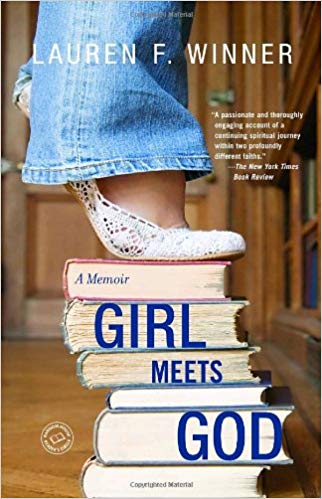I first stumbled upon “Girl Meets God” a few years ago at the Festival of Homiletics in Denver. At the time, it was almost eight years after the book had been published, but it was brand new for me.
It sat on my shelf for a l ong time. I had just inherited a large number of books from a retired pastor’s library and I was slowly working my way through them to decide which ones I thought would be helpful and wanted to keep, and which ones I had no interest in or felt the scholarship was a bit out of date. All of that is to say, reading new books was very low on my list of priorities.
ong time. I had just inherited a large number of books from a retired pastor’s library and I was slowly working my way through them to decide which ones I thought would be helpful and wanted to keep, and which ones I had no interest in or felt the scholarship was a bit out of date. All of that is to say, reading new books was very low on my list of priorities.
Then, I moved to a new place, started a new call, and all of a sudden I just didn’t have a lot of time to read. …well, that’s not quite fair. In truth, I wasn’t making reading, at least reading things “for work” a priority. It took me close to a year to finally make it through this book, going through phases when I would knock out twenty pages each day for a few days and when the book would get lost and forgotten in a bag or in my car for weeks, even months at a time.
Today, I FINALLY finished it! AND I am comiting myself to a schedule that will require me to write a book update once a week on whatever I’m reading, with the hope that I’ll actually be encouraged to read more.
But, let’s actually talk a bit about the book itself.
Lauren Winner is “The child of a Jewish father and a lasped Southern Baptist mother” and her memoir tells the story of how, on the path to Orthodox Judaism, she was inexplicity drawn to Jesus and Christianity. The result is her eventual conversion and participation in an Episcopalian congregation (and eventually becoming an Epispocalian priest), but the journey is really what this book is about.
Structured by the church year (Advent, Holy Week, Easter, Pentecost, etc.), Winner moves seamlessly between her present life as a still-learning/still-seeking Christian and her childhood, her time in Orthodox Judaism, and the people and incidents that led her there.
The writing is engaging and thoughtful, as Winner explores connections between the faith she loved so deeply and the faith she currently holds. She draws parallels and comparisons between Jewish holidays and rituals and Christian ones. She highlights connections between stories found in Hebrew scripture and in the New Testament that most people overlook, unless they have spent serious time in Bible Study.
This book was not a game changer for me, as there wasn’t much I could relate to personally, being a cradle Christian, but it was meaningful and deep, providing insight into what a conversion journey might look like.
I think my favorite passage occurs toward the end of the book, when Winner discusses the Book of Ruth and how Ruth had always been her favorite book of the bible when she was practicing Judaism. She hadn’t read it since she had begun her conversion process, but when she revisited it, she realized something: Obed, the son Ruth has with Boaz, is actually given two mothers and two fathers.
Ruth is obviously the biological mother, but Naomi also takes him on as the women in the area declare, “A son has been born to Naomi.” (Ruth 4:17). Boaz is Obed’s biological father, but he delcares that Mahlon, Ruth’s deceased husband, will still have a role: “10I have also acquired Ruth the Moabite, the wife of Mahlon, to be my wife, to maintain the dead man’s name on his inheritance, in order that the name of the dead may not be cut off from his kindred and from the gate of his native place; today you are witnesses.” (Ruth 4:10) This coupling of biological and non-biological parentage sets the stage in Jesus’ ancestry for another non-biological parent, Joseph.
All in all, I’d highly recommend this book for just about anyone, but especially for people who would like to have a better understanding of Christianity’s Jewish heritage.

 ong time. I had just inherited a large number of books from a retired pastor’s library and I was slowly working my way through them to decide which ones I thought would be helpful and wanted to keep, and which ones I had no interest in or felt the scholarship was a bit out of date. All of that is to say, reading new books was very low on my list of priorities.
ong time. I had just inherited a large number of books from a retired pastor’s library and I was slowly working my way through them to decide which ones I thought would be helpful and wanted to keep, and which ones I had no interest in or felt the scholarship was a bit out of date. All of that is to say, reading new books was very low on my list of priorities.